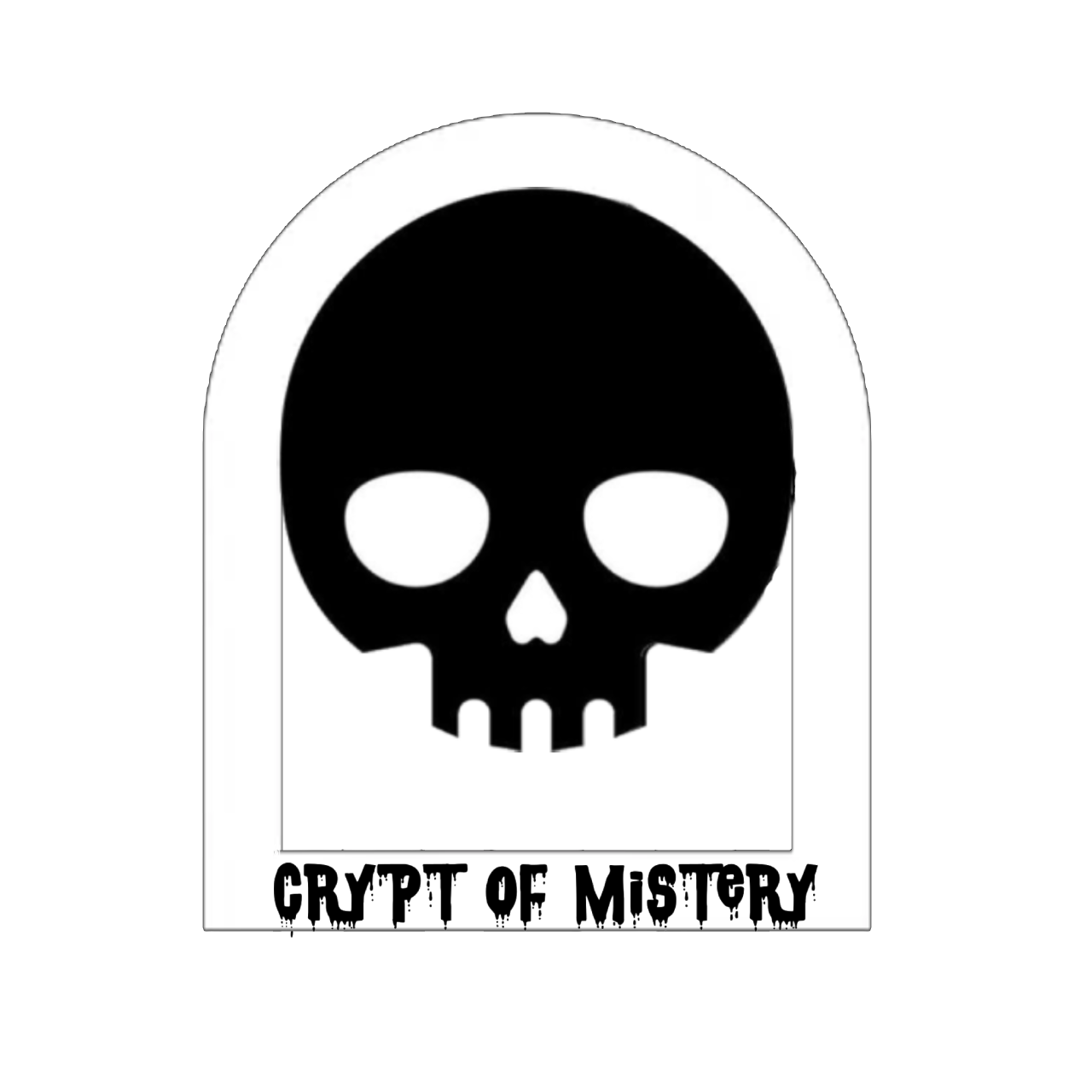The Beale Ciphers are a set of three encrypted messages that are said to reveal the location of a hidden treasure worth millions of dollars. The ciphers were first published in a pamphlet in 1885 by an anonymous author who claimed to have received them from a man named Thomas Beale. According to the story, Beale and his companions discovered a vast treasure in the American West in the early 19th century and buried it somewhere in Virginia. Before disappearing, Beale entrusted the ciphers to a friend, instructing him to publish them if he did not return within 10 years.
The Beale Ciphers have captured the imagination of treasure hunters and cryptographers for over a century. The idea of a hidden treasure waiting to be discovered has always been an enticing one, and the mystery surrounding the ciphers only adds to their allure. Many people have attempted to decipher the codes and find the treasure, but so far, no one has been successful. The Beale Ciphers remain one of the greatest unsolved mysteries in American history.
Key Takeaways
- The Beale Ciphers are a set of three encrypted messages that supposedly reveal the location of a hidden treasure.
- The ciphers were created by Thomas Beale, who disappeared without a trace, leaving behind only a locked iron box containing the ciphers.
- Despite numerous attempts, the ciphers have never been fully deciphered, leading to various theories and speculations about their meaning.
- Cryptography techniques such as frequency analysis and substitution have been used to try and crack the ciphers.
- The mystery of the Beale Vault and the hunt for the treasure continue to captivate treasure hunters and cryptographers, and have inspired works of popular culture.
The Mysterious Disappearance of Thomas Beale: The Key to the Ciphers?
Thomas Beale was allegedly a frontiersman who stumbled upon a vast treasure while exploring the American West in the early 19th century. According to the story, Beale and his companions spent several years accumulating gold, silver, and other valuable items from various sources, including mines and trading posts. They eventually decided to bury their treasure in a secret location in Virginia for safekeeping.
After burying the treasure, Beale entrusted three encrypted messages to a friend named Robert Morriss. The messages were said to contain detailed instructions on how to locate the treasure. Beale then disappeared, never to be seen again. Some believe that he died while others speculate that he simply chose to live out the rest of his days in seclusion.
Theories about Beale’s involvement in the creation of the ciphers vary. Some believe that Beale himself created the codes as a way to protect the location of the treasure. Others argue that Beale was merely a messenger, delivering the ciphers to Morriss on behalf of someone else. The true identity of the author of the ciphers remains a mystery.
The Three Beale Ciphers: An Unsolvable Puzzle or a Hidden Treasure Map?
The Beale Ciphers consist of three encrypted messages, known as Cipher 1, Cipher 2, and Cipher 3. Each cipher is a combination of numbers that correspond to words in a key text. The key text for each cipher is said to be a specific book or document, but the exact sources have never been definitively identified.
Cipher 1 is the most well-known and has received the most attention from codebreakers. It consists of a series of numbers that correspond to words in the United States Declaration of Independence. According to the story, this cipher reveals the location of the treasure and a detailed inventory of its contents.
Cipher 2 is shorter and less complex than Cipher 1. It is believed to contain additional information about the treasure, such as its exact dimensions and weight.
Cipher 3 is the most mysterious of the three ciphers. It consists of a series of numbers that do not correspond to any known text. Some believe that Cipher 3 is a decoy or a red herring, designed to confuse codebreakers and protect the true location of the treasure.
The authenticity of the ciphers has been called into question by some skeptics, who argue that they are an elaborate hoax designed to deceive and frustrate treasure hunters. However, many others believe that the ciphers are genuine and hold the key to a hidden fortune.
Theories and Speculations: What Could the Beale Ciphers Reveal?
| Beale Cipher | Theories and Speculations |
|---|---|
| Cipher 1 | Reveals the location of a hidden treasure in Bedford County, Virginia |
| Cipher 2 | Contains a message from Thomas Jefferson regarding the Declaration of Independence |
| Cipher 3 | Reveals the true identity of William Shakespeare |
The Beale Ciphers have sparked countless theories and speculations about what they could reveal. Some believe that the ciphers contain the exact location of the buried treasure, including detailed instructions on how to find it. Others speculate that the ciphers contain a message from Thomas Beale himself, explaining why he chose to bury the treasure and disappear.
One popular theory is that the ciphers reveal the location of a vast cache of gold and silver coins, as well as other valuable items such as jewelry and precious gemstones. According to this theory, the treasure is worth millions of dollars and would make anyone who found it incredibly wealthy.
Another theory is that the ciphers contain a message from Beale, explaining his reasons for burying the treasure and disappearing. Some believe that Beale may have been involved in illegal activities, such as smuggling or counterfeiting, and chose to hide his ill-gotten gains rather than face prosecution.
There are also those who believe that the ciphers are a hoax and do not contain any valuable information at all. They argue that the ciphers were created by someone looking to make a quick buck by selling copies of the pamphlet or by attracting attention to a particular location.
Cryptography 101: Understanding the Codebreaking Techniques Used to Decipher the Ciphers
Cryptography is the practice of creating and deciphering codes and ciphers. It is an ancient art that has been used throughout history to protect sensitive information and communicate secretly. The Beale Ciphers are an example of a substitution cipher, where each letter or group of letters is replaced by another letter or group of letters according to a specific rule.
Codebreakers have used a variety of techniques to try and crack the Beale Ciphers. One common approach is frequency analysis, which involves analyzing the frequency of letters or groups of letters in the ciphertext and comparing them to the frequency of letters in the English language. This can help identify patterns and potentially reveal the key to the cipher.
Another technique is known as cribbing, which involves guessing or deducing parts of the plaintext based on known information or educated guesses. For example, if a codebreaker knows that a particular word is likely to appear in the plaintext, they can use that information to try and decipher other parts of the message.
Despite the best efforts of codebreakers, the Beale Ciphers have proven to be incredibly difficult to crack. The lack of a known key text and the complexity of the ciphers themselves have made it nearly impossible to decipher their contents. As a result, the true meaning of the ciphers remains a mystery.
The Unsolved Mystery of the Beale Vault: Is It Real or Just a Hoax?

One of the most debated aspects of the Beale Ciphers is the existence of the Beale Vault, the supposed location of the hidden treasure. According to the story, Beale and his companions buried their treasure in a secret location in Virginia before disappearing. However, despite numerous attempts to locate the vault, it has never been found.
Some believe that the Beale Vault is a real place and that it contains a vast treasure waiting to be discovered. They argue that Beale would not have gone through the trouble of creating elaborate ciphers if there was no treasure to be found. They point to various clues and hints in the ciphers as evidence that the vault is real and can be found.
Others argue that the Beale Vault is nothing more than a figment of someone’s imagination. They believe that the ciphers were created as part of an elaborate hoax designed to deceive and frustrate treasure hunters. They point to inconsistencies and contradictions in the story as evidence that it is not true.
The debate over the existence of the Beale Vault continues to this day, with no definitive evidence one way or the other. Until the vault is found, the true nature of the Beale Ciphers will remain a mystery.
The Hunt for the Beale Treasure: Stories of Success and Failure
Over the years, many treasure hunters have attempted to find the Beale treasure, with varying degrees of success. Some have claimed to have cracked the ciphers and located the vault, while others have come up empty-handed. The stories of these treasure hunters provide a fascinating glimpse into the world of treasure hunting and the lengths that people will go to in search of hidden riches.
One of the most famous attempts to find the Beale treasure was made by a man named James Ward. In 1885, Ward claimed to have cracked Cipher 2 and located the vault in Bedford County, Virginia. He organized an excavation and enlisted the help of local residents, but after weeks of digging, they found nothing. Ward’s failure only added to the mystery and intrigue surrounding the Beale Ciphers.
Another notable attempt was made by a group of treasure hunters known as “The Beale Group.” In 1983, they claimed to have cracked Cipher 1 and located the vault in Bedford County. They organized an excavation and even brought in heavy machinery to assist with the dig. However, after months of searching, they were forced to abandon their efforts due to lack of funding.
These stories of success and failure highlight the challenges and risks involved in treasure hunting. The Beale Ciphers continue to attract treasure hunters from around the world, each hoping to be the one who finally solves the mystery and finds the hidden treasure.
The Legacy of the Beale Ciphers: How They Continue to Fascinate Treasure Hunters and Cryptographers Alike
The Beale Ciphers have had a lasting impact on both the fields of cryptography and treasure hunting. They continue to capture the imagination of people around the world, inspiring countless books, movies, and video games. The mystery and intrigue surrounding the ciphers have made them a popular topic of discussion and debate among enthusiasts.
In the field of cryptography, the Beale Ciphers are often cited as one of the greatest unsolved mysteries in the history of codebreaking. They have challenged some of the brightest minds in the field and pushed the boundaries of what is possible in terms of encryption and decryption. The ciphers have also served as a reminder of the importance of cryptography in protecting sensitive information and maintaining privacy.
In the world of treasure hunting, the Beale Ciphers have become a symbol of the elusive nature of hidden treasures. They represent the ultimate challenge for treasure hunters, a puzzle that has yet to be solved. The ciphers have inspired countless individuals to embark on their own treasure hunts, each hoping to be the one who finally finds the Beale treasure.
The Beale Ciphers in Popular Culture: From Books to Movies to Video Games
The Beale Ciphers have been a popular subject in popular culture, appearing in numerous books, movies, and video games. Their mysterious nature and potential for hidden treasure make them an ideal plot device for stories of adventure and intrigue.
One of the most famous depictions of the Beale Ciphers in popular culture is in the novel “The Lost Symbol” by Dan Brown. In the book, the protagonist Robert Langdon must decipher a set of ciphers that lead to a hidden treasure. The story takes Langdon on a thrilling journey through Washington D.C., as he races against time to solve the mystery before it falls into the wrong hands.
The Beale Ciphers have also been featured in several movies, including “National Treasure” and its sequel “National Treasure: Book of Secrets.” In these films, a group of treasure hunters must decipher a set of clues and solve puzzles in order to find a hidden treasure. The Beale Ciphers are referenced as one of the many historical mysteries that the characters encounter on their quest.
In the world of video games, the Beale Ciphers have been the inspiration for several puzzle-solving games. Players must decipher a series of codes and clues in order to progress through the game and find hidden treasures. These games often require a combination of logic, deduction, and pattern recognition skills to solve the puzzles and unlock the secrets of the Beale Ciphers.
The Future of the Beale Ciphers: Will They Ever Be Fully Decoded?
The future of the Beale Ciphers remains uncertain. Despite over a century of attempts, no one has been able to fully decode the ciphers and reveal their true meaning. The lack of a known key text and the complexity of the ciphers themselves have made them an incredibly difficult puzzle to solve.
However, advancements in technology and cryptography may hold the key to finally cracking the Beale Ciphers. New techniques and algorithms are constantly being developed that could potentially break even the most complex codes. It is possible that one day, someone will discover a breakthrough that allows them to decipher the ciphers and reveal their hidden secrets.
If the Beale Ciphers are ever fully decoded, it could have a significant impact on the treasure hunting community. The location of the hidden treasure would finally be revealed, and treasure hunters from around the world would flock to Virginia in search of their fortune. The discovery would also provide valuable insights into the history of cryptography and codebreaking, shedding light on one of the greatest unsolved mysteries in American history.
In conclusion, the Beale Ciphers are a treasure hunt of epic proportions. The mystery surrounding their creation and contents has captured the imagination of people around the world for over a century. Despite numerous attempts, no one has been able to fully decode the ciphers or locate the hidden treasure. The Beale Ciphers remain one of the greatest unsolved mysteries in American history, inspiring countless treasure hunters and cryptographers to continue the search for the hidden fortune.
FAQs
What are the Beale Ciphers?
The Beale Ciphers are a set of three ciphertexts that allegedly reveal the location of a buried treasure in the United States.
Who created the Beale Ciphers?
The creator of the Beale Ciphers is unknown. The ciphers were first published in a pamphlet in 1885 by a man named James B. Ward, who claimed to have received them from a friend named Thomas J. Beale.
What is the story behind the Beale Ciphers?
According to the story, in the early 1800s, a man named Thomas J. Beale and a group of fellow adventurers discovered a large amount of gold and silver while mining in Colorado. They transported the treasure to Virginia and buried it in a secret location. Beale then created the ciphers to ensure that only someone with the key could find the treasure.
Have the Beale Ciphers been solved?
Despite numerous attempts, the Beale Ciphers have never been definitively solved. Some people believe that they are a hoax, while others believe that they are genuine but too difficult to crack.
What is the Beale Papers book?
The Beale Papers is a book that was published in 1885 by James B. Ward. It contains the text of the three ciphers, as well as a purported explanation of their contents.
What is the Beale Treasure?
The Beale Treasure is the name given to the gold and silver that is said to be buried somewhere in Virginia, as revealed by the Beale Ciphers. Its value is estimated to be worth millions of dollars.







